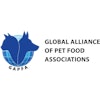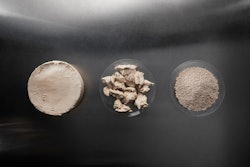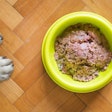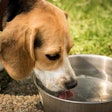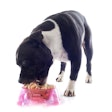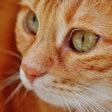
Cats haven’t received as much research attention as dogs, especially when considering biotics and their influence on gut health. However, as pet cat populations increase globally relative to dogs, studying cats’ digestion becomes increasingly important to pet food companies. A study published in the journal Animals examined the effects of a blend of a postbiotic and prebiotic on pet cats as those animals switched diets. Pet food ingredient supplier ADM sponsored the study in collaboration with China Agricultural University’s Pet Nutrition Research Center.
“ADM has invested in studying the potential benefits of functional ingredients for both canines and felines so we can bring species-specific solutions with scientifically substantiated health claims to the pet care market,” Peter Jüsten, ADM global vice president for research and development in health and wellness, told Petfood Industry. “Postbiotics are still relatively new to the pet nutrition industry, and they have fantastic potential for maintaining stability and functionality across a wide variety of pet product formats. So not only was this an innovative study because of the focus on cats, but also because of the evaluation of a postbiotic in combination with a soluble dietary fiber.”
Biotics may offer a solution to a problem common to cats and their owners. Any humans who’ve tried a new diet or eaten a food they weren’t accustomed to can understand how an abrupt dietary shift can cause digestive disruption. Likewise in cats, a new food can lead to gastrointestinal disturbances, affecting microbiota balance and intestinal barrier integrity.
In their experiment, China Agricultural University scientists used a postbiotic, heat-treated Bifidobacterium longum CECT-7347, combined with prebiotic Fibersol-2. The researchers gave the blend to 12 adult cats undergoing a shift from a lower-protein (LPF) to a higher-protein (HPF) diet. The results provided evidence that this combination of functional additives can reduce the negative effects of dietary changes, while supporting intestinal homeostasis and immune function.
For 14 days, a control group of cats received an LPF diet (33% protein), while the other group consumed the same diet supplemented with 0.16% B. longum CECT-7347 and Fibersol-2. Afterward, both groups transitioned to an HPF diet (40% protein). The experimental group continued receiving supplementation. The researchers collected blood and fecal samples at multiple intervals to assess intestinal inflammation, microbiota composition and gut barrier function.
Effects of postbiotic, prebiotic blend on cat digestion
During the diet transition, both groups had increased levels of serum lipopolysaccharides, a potential sign of intestinal barrier disruption. However, cats receiving the supplement showed significantly lower LPS levels throughout the study. The researchers suggested that the functional additive likely contributed to this improvement by modulating gut microbiota composition and reducing Gram-negative bacterial activity, which can elevate LPS levels.
Analysis of microbes in the cats’ feces revealed that the treated group maintained a more stable gut microbiome. Beneficial bacteria such as Blautia, known for producing organic acids that regulate pH and promote gut health, were higher in the supplemented group. Additionally, the treated group exhibited lower fecal pH, likely due to increased Blautia abundance and subsequently lower lactic acid production.
Meanwhile, the control group experienced an increase in Parasutterella, a bacterial genus associated with inflammation and irritable bowel syndrome. However, the treated group displayed higher levels of Lachnospiraceae and Actinobacteria, both of which contribute to gut homeostasis and overall health.
“Heat-treated Bifidobacterium longum CECT 7347, also called PRIOME Gut Health and Fibersol-2, or Pet Fibersol, were found to be safe and well-tolerated by cats when supplemented at the daily amount provided in the study, with no adverse events recorded as a result of feed supplementation,” Jüsten said. “Additionally, both ingredients are accepted by the American Association of Feed Control Officials (AAFCO) for incorporation into pet food and feed supplements in North America, as well as permitted by the European Food Safety Authority (EFSA) and classified as a feed material in the United Kingdom and European Union.”
Along with being accepted by regulatory bodies, postbiotics may be easier to incorporate into formulations for pet food producers, while maintaining functionality. Since postbiotics have already been heat-killed, the high temperatures and pressures used in pet food processing have less effect on postbiotics than their still-living probiotic cousins.
“Both the PRIOME Gut Health postbiotic and Pet Fibersol retain stability and functionality when subjected to harsh manufacturing conditions common within the petfood industry, such as hot extrusion and retort processing, so it’s possible to incorporate these ingredients into an array of finished formats that cats find palatable,” Jüsten said. “This is especially noteworthy when it comes to cat supplements and treats, as cats are notoriously picky eaters.”
Because postbiotic and prebiotic fiber blends can withstand processing, the supplements could be incorporated into kibble, treats or wet products. What’s more, products made with the blends could help cats transitioning to new diets.


